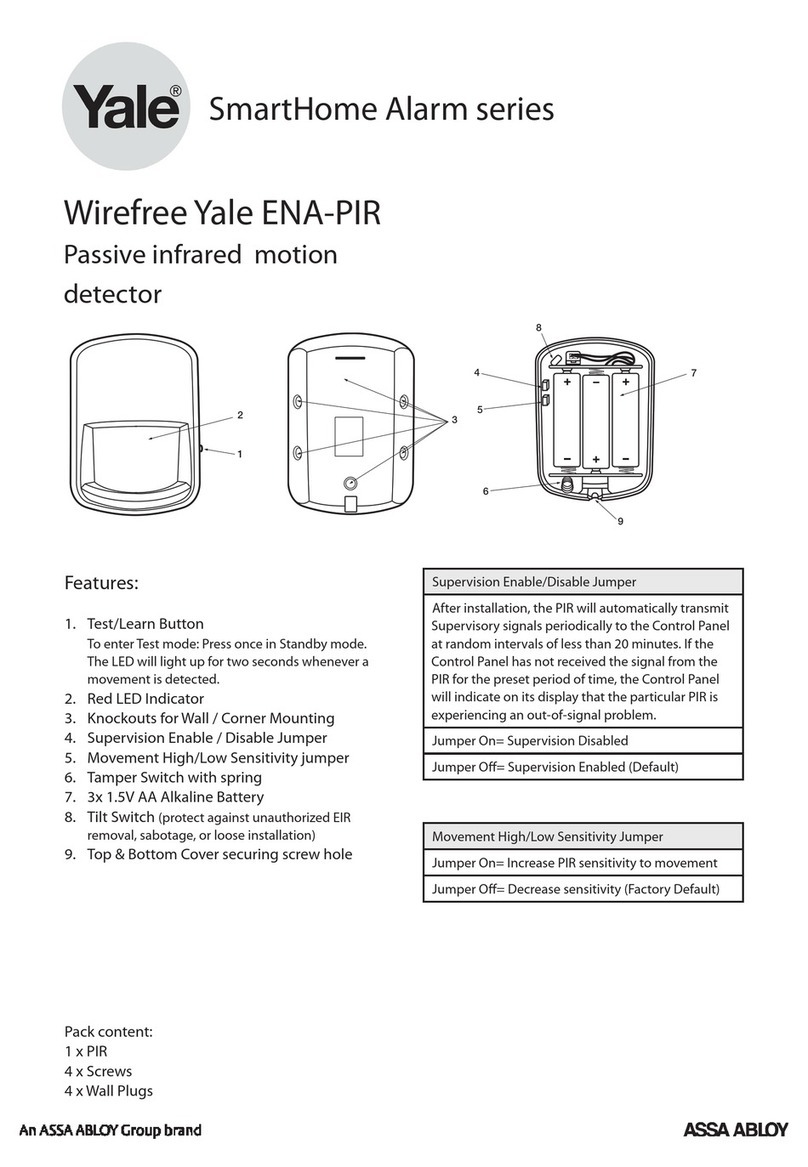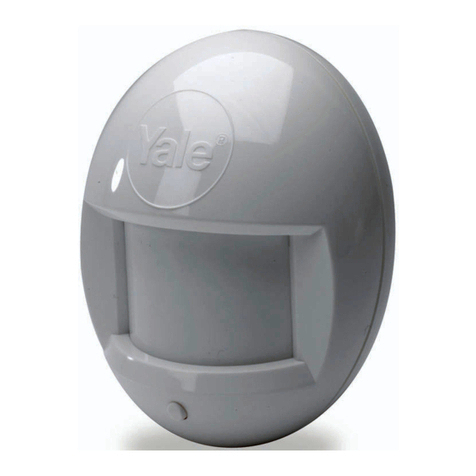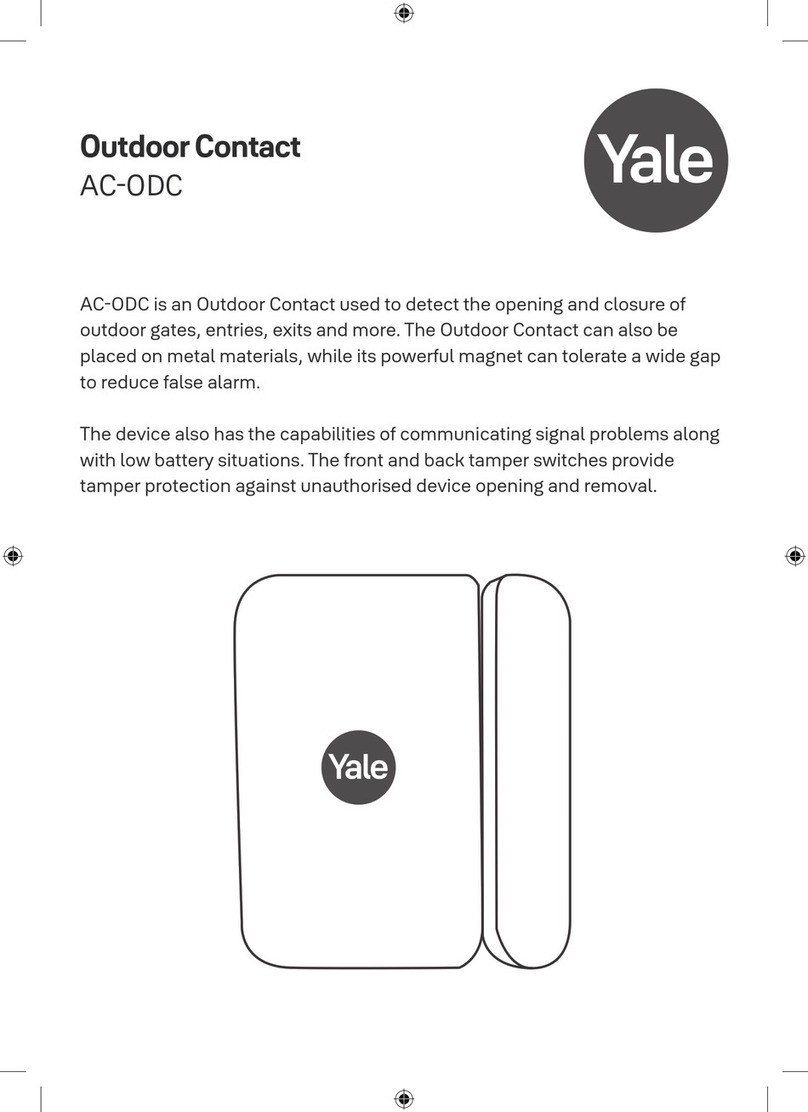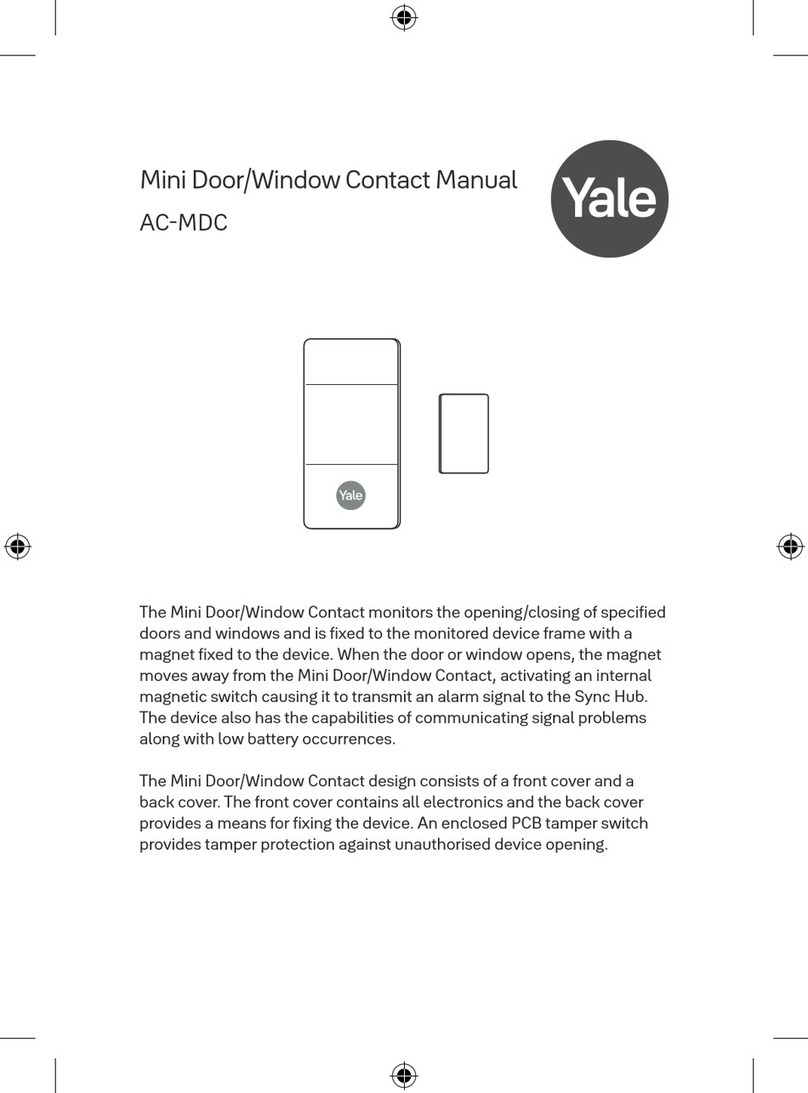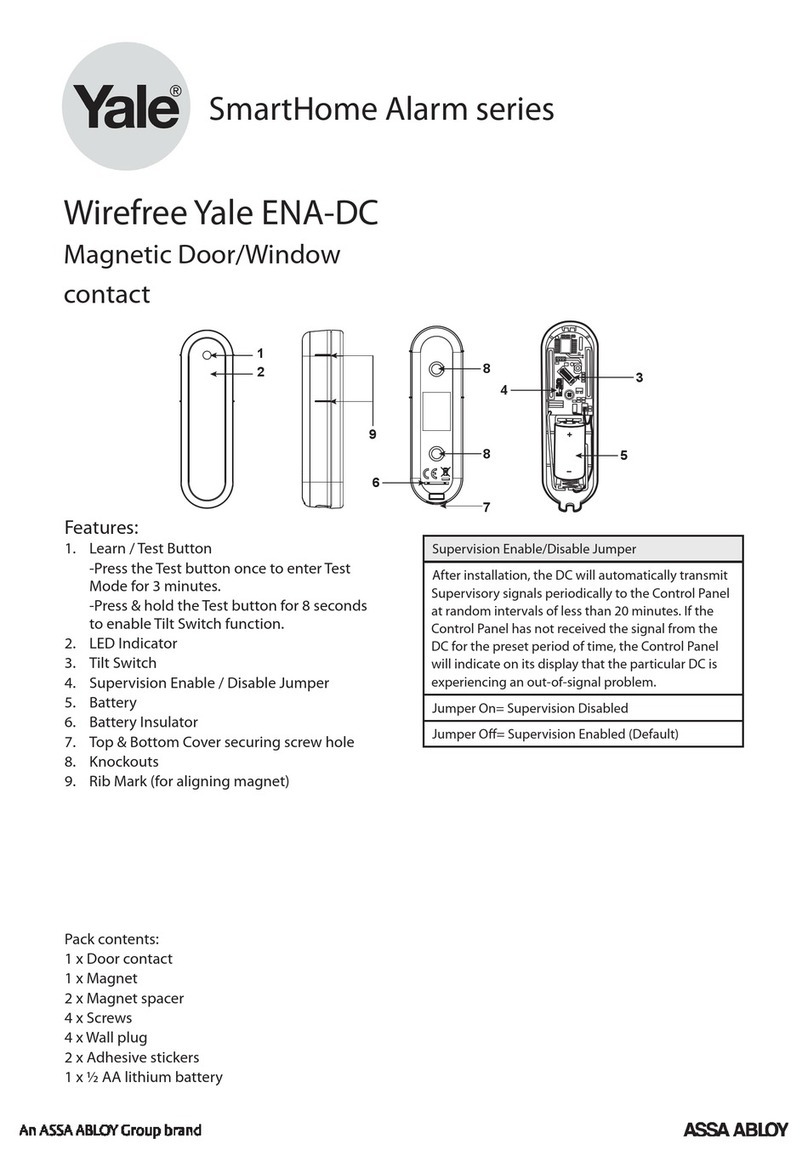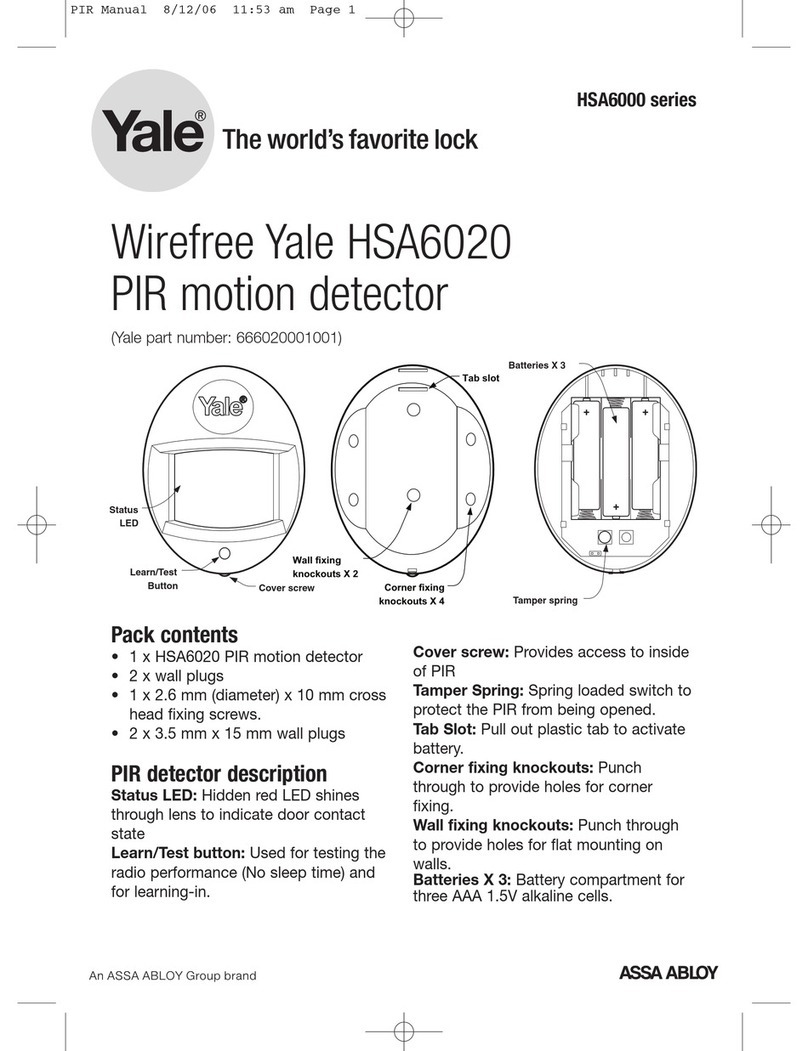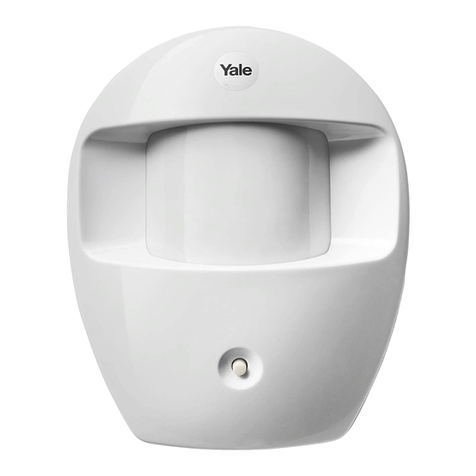
Please install the Outdoor Motion
Detector straight up. Do not tilt it.
Do not install the Outdoor Motion
Detector where objects moved by
wind such as trees and laundry,
may block the Outdoor Motion
Detector’s field of view.
Clear all light reflecting surfaces
from the detection area, as well as
water puddles.
Avoid pointing the unit at the path
of either intake or exhaust airflow
from such as air conditioning units
or tumble dryer outlets.
IMPORTANT NOTICE
Adjust the Dip Switches according to the installation location of
the Outdoor Motion Detector for ideal performance. If Dip Switch
settings do not match with installation environment, the Outdoor
Motion Detector’s performance will be hindered and may cause
either false alarm or inability to detect movement.
The Outdoor Motion Detector detects differences between the
moving object and the background.
Do not install the motion sensor where objects moved by wind such as trees and laundry, which may block the
motion sensor’s field of view.
Clear all light reflecting surfaces from the detection area, as well as water puddles.
Avoid looking directly at the path of outdoor unit’s intake or exhaust airf l ow.
<
<I
IM
MP
PO
OR
RT
TA
AN
NT
T
N
NO
OT
TE
E>
>
Adjust the Dip Switches according to the installation location of the Motion Sensor for ideal performance. If Dip
Switch settings does not match with installation environment, the Motion Sensor’s performance will be hindered
and may cause either false alarm or inability to detect movement.
The Motion Sensor detects differences between the moving object and the background. If the object is idle (i.e.
not moving), the Motion Sensor is unable to detect it.
The Motion Sensor has a directional characteristic and is most effective at detecting intruder moving across field
of detection. It is less sensitive for detecting motion directly towards the Motion Sensor.
Do not install the motion sensor where objects moved by wind such as trees and laundry, which may block the
motion sensor’s field of view.
Clear all light reflecting surfaces from the detection area, as well as water puddles.
Avoid looking directly at the path of outdoor unit’s intake or exhaust airflo w.
<
<I
IM
MP
PO
OR
RT
TA
AN
NT
T
N
NO
OT
TE
E>
>
Adjust the Dip Switches according to the installation location of the Motion Sensor for ideal performance. If Dip
Switch settings does not match with installation environment, the Motion Sensor’s performance will be hindered
and may cause either false alarm or inability to detect movement.
The Motion Sensor detects differences between the moving object and the background. If the object is idle (i.e.
not moving), the Motion Sensor is unable to detect it.
The Motion Sensor has a directional characteristic and is most effective at detecting intruder moving across field
of detection. It is less sensitive for detecting motion directly towards the Motion Sensor.
Do not install the motion sensor where objects moved by wind such as trees and laundry, which may block the
motion sensor’s field of view.
Clear all light reflecting surfaces from the detection area, as well as water puddles.
Avoid looking directly at the path of outdoor unit’s intake or exhaust airfl o w.
<
<I
IM
MP
PO
OR
RT
TA
AN
NT
T
N
NO
OT
TE
E>
>
Adjust the Dip Switches according to the installation location of the Motion Sensor for ideal performance. If Dip
Switch settings does not match with installation environment, the Motion Sensor’s performance will be hindered
and may cause either false alarm or inability to detect movement.
The Motion Sensor detects differences between the moving object and the background. If the object is idle (i.e.
not moving), the Motion Sensor is unable to detect it.
The Motion Sensor has a directional characteristic and is most effective at detecting intruder moving across field
of detection. It is less sensitive for detecting motion directly towards the Motion Sensor.
Do not install the motion sensor where objects moved by wind such as trees and laundry, which may block the
motion sensor’s field of view.
Clear all light reflecting surfaces from the detection area, as well as water puddles.
Avoid looking directly at the path of outdoor unit’s intake or exhaust airfl o w.
<
<I
IM
MP
PO
OR
RT
TA
AN
NT
T
N
NO
OT
TE
E>
>
Adjust the Dip Switches according to the installation location of the Motion Sensor for ideal performance. If Dip
Switch settings does not match with installation environment, the Motion Sensor’s performance will be hindered
and may cause either false alarm or inability to detect movement.
The Motion Sensor detects differences between the moving object and the background. If the object is idle (i.e.
not moving), the Motion Sensor is unable to detect it.
The Motion Sensor has a directional characteristic and is most effective at detecting intruder moving across field
of detection. It is less sensitive for detecting motion directly towards the Motion Sensor.






